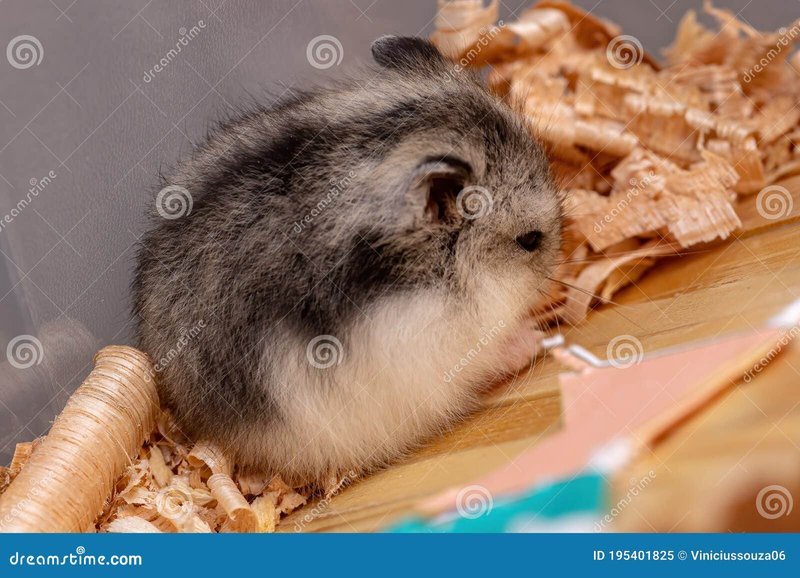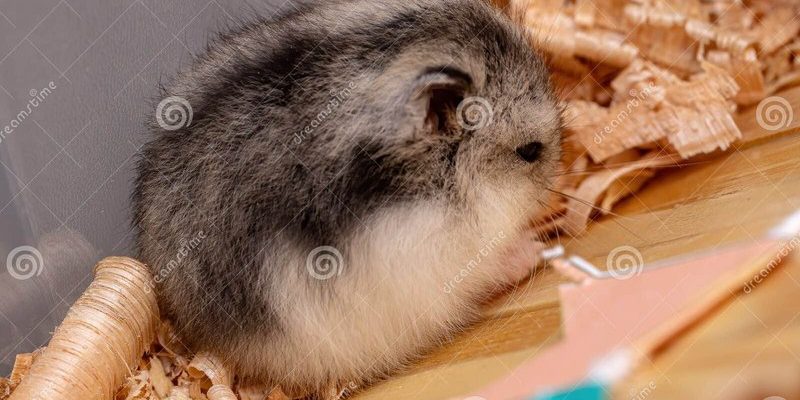
Imagine a tiny ball of fluff, whirling around its cage like a furry tornado. That’s your Dwarf Campbell hamster—a small, energetic pet that’s full of personality. They’re known for their playful nature and ability to fit into smaller spaces, making them a favorite among those who want a pet that doesn’t require a lot of space. However, with their charm comes responsibilities and considerations that you should know about before deciding if one of these little creatures is right for you.
What Is a Dwarf Campbell Hamster?
Dwarf Campbell hamsters are a type of dwarf hamster that originated from Central Asia. People often confuse them with other dwarf species, but they have their own distinct traits. They typically measure around 3 to 4 inches long and have a round body with short legs and a cute, furry face. You might spot them in various colors and patterns, which adds to their charm.
What sets them apart from other hamsters? Dwarf Campbell hamsters are social creatures—they love company and can often be kept in pairs or small groups. This can be a big draw for people who want pets that interact well with others. However, it’s essential to introduce them carefully, as they can sometimes be territorial.
In terms of lifespan, Dwarf Campbell hamsters usually live for about 2 to 3 years. While it’s a shorter time than, say, a dog or a cat, their small size means they can still bring a lot of joy in a short amount of time.
Pros of Dwarf Campbell Hamsters
Dwarf Campbell hamsters come with a few notable advantages that make them appealing:
- Compact Size: Their small stature makes them a great choice for those with limited space.
- Low Maintenance: Hamsters are generally easy to care for, needing only fresh food, water, and bedding.
- Social Creatures: They thrive in pairs, providing companionship for each other (and for you!).
- Active and Entertaining: Their energetic antics can provide endless entertainment.
Dwarf Campbell hamsters are like the tiny entertainers of the pet world. You can easily fit their cage on a desk or shelf, and their playful behavior can turn a dull day into a fun one. Watching them zoom around in their wheel or burrow in their bedding can be incredibly enjoyable.
Another plus? They don’t require extensive grooming or elaborate diets—just a simple, balanced hamster mix, some fresh veggies, and the occasional treat. Plus, their small size means they don’t eat much, making feeding them a breeze.
Cons of Dwarf Campbell Hamsters
Of course, every pet has its downsides, and the Dwarf Campbell hamster is no exception. Here are a few things to keep in mind:
- Escape Artists: These little critters are known for squeezing through small gaps and can escape quite easily!
- Nighttime Activity: They are nocturnal, so be prepared for some nighttime antics while they’re wide awake.
- Social Dynamics: Not all hamsters get along. You’ll need to watch for signs of aggression, especially if they’re housed together.
- Short Lifespan: Their lifespan might be shorter than other pets, which can be tough emotionally for owners.
Sure, they’re adorable and fun, but don’t underestimate their escape abilities! Make sure their cage is secure because they can wiggle through surprisingly small holes. And if you’re a light sleeper, be prepared for some late-night squeaks and wheel-running that might keep you awake.
Their social nature also means that introducing them to a cage mate can sometimes lead to conflicts. It’s essential to monitor their interactions closely to avoid fights. Plus, their relatively short life can be a challenge for pet owners who become attached.
Are They Good for Kids?
You might be wondering if Dwarf Campbell hamsters make good pets for kids. The short answer is: it depends. While they can be a fun introduction to pet care, here are some considerations:
- Supervision Required: Younger children may need supervision when handling them to avoid accidental drops or bites.
- Understanding Cues: Kids need to learn how to read the hamster’s body language, as these creatures can be sensitive and territorial.
- Time Commitment: Teaching kids about daily care routines can help them appreciate responsibility.
- Interactivity: They can learn a lot about empathy and care from interacting with a pet.
With the right guidance, a Dwarf Campbell hamster can teach kids valuable lessons about responsibility and empathy. However, ensure they know how to handle the hamster gently and recognize when the little guy needs alone time or has had enough handling.
Setting Up Their Habitat
Creating the right living environment for a Dwarf Campbell hamster is crucial for their well-being. Here’s what you need to keep in mind:
- Size of the Cage: A cage of at least 24″x12″ is good for a single hamster, with multiple levels or platforms for climbing.
- Bedding Material: Use safe bedding like aspen shavings or paper-based products; avoid cedar or pine shavings, as they can harm their respiratory systems.
- Hiding Spots: Provide tunnels, toys, and hiding places to keep them entertained and secure.
- Wheel and Exercise: An exercise wheel is essential for keeping them fit and happy.
Think of their habitat as a tiny amusement park—filled with tunnels for exploration, cozy hideouts for comfort, and a wheel for exercise. This setup will help keep them mentally and physically stimulated, leading to a happier hamster.
Feeding Your Dwarf Campbell Hamster
Understanding their dietary needs is another piece of the puzzle. A balanced diet typically includes:
- Commercial Hamster Mix: Look for pellets or mixes that provide essential nutrients.
- Fruits and Vegetables: Small bits of veggies like carrots or leafy greens can be great additions, just not too much at once!
- Treats: Occasionally, a small treat like a sunflower seed or a piece of dried fruit can be a fun surprise.
Think of their diet as a balanced plate of colors—variety is key! Keep portions small to prevent health issues, and remember, moderation is the name of the game.
So, is the Dwarf Campbell hamster the right pet for you? If you’re looking for a small, active, and engaging companion, they could be a fantastic choice. They’re relatively low-maintenance and come with a playful personality that can brighten your day.
However, if you’re not ready for potential nighttime antics, escape artist escapes, or managing social behaviors, you might want to think twice. Ultimately, the best pet is one that fits your lifestyle, so take your time weighing the pros and cons. With the right care and understanding, a Dwarf Campbell hamster can bring joy and companionship into your life, making every moment spent together feel like a tiny adventure.

